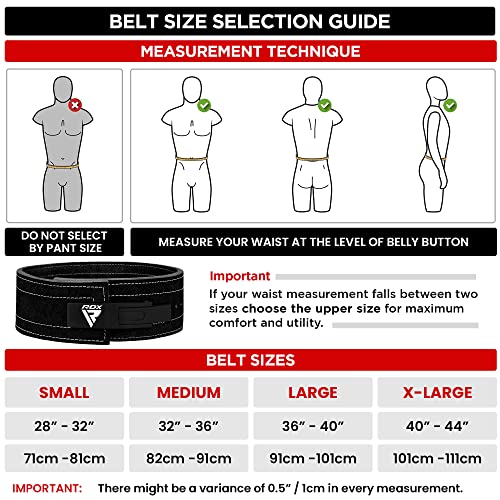Powerlifting Belt - IPF Approved
Category: ipf approved powerlifting belt

Powerlifting, a sport that demands unwavering strength and commitment, often relies on specialized equipment to assist athletes in achieving their goals. One such crucial piece of gear is the powerlifting belt. This seemingly simple yet essential accessory plays a vital role in safeguarding the spine and enhancing performance during intense lifts.
The primary function of a powerlifting belt is to provide support and stability to the lower back during heavy compound exercises, such as the squat, bench press, and deadlift. The belt acts as an external brace, helping to maintain proper spinal alignment and prevent excessive lumbar flexion or extension. This support not only reduces the risk of injury but also allows the lifter to generate more force and effectively transfer it to the bar.
The design of a powerlifting belt is typically characterized by its width, thickness, and material composition. The standard width ranges from 4 to 10 inches, with the most common being 10 inches. The thickness, on the other hand, can vary from 6.35 to 13 millimeters, with the thicker belts offering more rigidity and support.
The material of the belt is also of utmost importance. Leather is a popular choice due to its durability, stiffness, and ability to withstand high-tension loads. Suede and nylon are alternative materials that offer slightly more flexibility and a more customizable fit. The choice of material often comes down to personal preference and the specific demands of the lifter's training and competition needs.
Proper usage and positioning of the powerlifting belt are crucial for maximizing its benefits. The belt should be worn snugly around the waist, just above the hip bones, with the majority of the width positioned across the lower back. This placement allows the belt to create intra-abdominal pressure, which in turn stabilizes the spine and enhances the lifter's bracing ability.
When used correctly, the powerlifting belt can provide several key advantages. It can help to increase intra-abdominal pressure, which in turn increases the amount of force that can be produced during a lift. This improved force production can lead to higher lifts and better overall performance. Additionally, the belt's support can help to reduce the strain on the lower back, potentially decreasing the risk of injury and allowing the lifter to train more consistently and effectively.
It is important to note, however, that the use of a powerlifting belt should be balanced with a strong core and proper lifting technique. The belt should not be used as a crutch to compensate for poor form or a weak midsection. Instead, it should be employed as a tool to enhance an already established foundation of strength and stability.
In conclusion, the powerlifting belt is a critical piece of equipment for serious lifters. By providing essential support and stability to the spine, it allows athletes to push the boundaries of their strength and safely achieve their personal bests. Whether competing at the highest levels or simply striving for personal improvement, the powerlifting belt remains an indispensable ally in the pursuit of lifting excellence.
product information:
| Attribute | Value | ||||
|---|---|---|---|---|---|
| brand_name | LiftingLarge | ||||
| color | Black | ||||
| suggested_users | womens | ||||
| manufacturer | LiftingLarge | ||||
| part_number | 1PRONGS13 | ||||
| size | 5XL 51-59 inch waist | ||||
| customer_reviews |
| ||||
| best_sellers_rank | #549,101 in Sports & Outdoors (See Top 100 in Sports & Outdoors) #785 in Weight Lifting Belts | ||||
| date_first_available | June 8, 2018 |


















